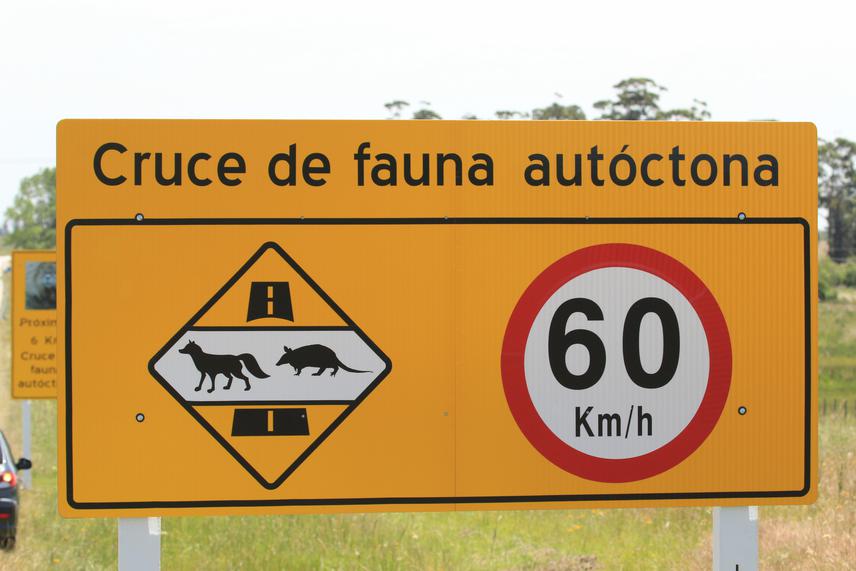Social media video featuring the project.
Seguimos avanzando y conservando nuestra fauna
14 Dec 2020 La Paloma, Uruguay, Central and Latin America Mammals
Species Richness and Conservation Status of Medium and Large Mammal Populations in the Protected Area Quebrada de los Cuervos, Uruguay
Study of the Impacts Generated by National Routes in the Mammal Populations in Uruguay
In 2015 the NGO ECOBIO Uruguay introduced a new line of research in the country: "Ecology of Road Infrastructures and Biodiversity". The first project "Impact of routes on mid-sized and large mammal populations", sought to provide information on the effects of roads on biodiversity in Uruguay. In order to prioritize direct interaction with society, we began strengthening the network for wildlife roadkill monitoring.
Subsequently, a mobile phone application was created that allowed information to be collected easily and quickly. So far, through this network and the application, thousands of vertebrates killed on roads have been recorded, mainly mammals. Students from various disciplines have been involved in this line of work within the framework of various research projects. In addition, several sites with high mortality of fauna have been identified with the information gathered.

During 2019, we began working with the Ministry of Transport and Public Works (MTOP), which included training workshops for MTOP officials. In December 2019, the first mitigation measures were installed in three high mortality sites in the department of Rocha. These consisted of wildlife crossing signs that inform drivers they are entering an area where wildlife crosses regularly and thus must slow down. At the same time, outreach workshops were held seeking to inform the public about the importance of respecting the speed limits implemented in each section.
We believe it is essential to begin evaluating the effectiveness of the adopted mitigation measures, and to start monitoring the bridges located within the signalized road sections and nearby areas, in order to analyse how they are used by mammal sp.
The Ecology of Road Infrastructures and Biodiversity line of research has induced the active involvement of the population in this problematic through participatory monitoring. It has played a fundamental role in raising awareness of biodiversity conservation at the national level and in the search for mitigation measures. This led to the joint venture alongside the Ministry of Transport and Public Works (MTOP) of installing wildlife crossing road signs at three high mortality mammal sites for the first time in the country. To this we add the declaration of interest granted by the National Environment Directorate (DINAMA) towards our project.
This proposal also aims to reinforce the link with decision-makers and to incorporate society directly into the work we do through citizen science, which we believe is fundamental for the conservation of biodiversity and ecosystems.
• To advance in the analysis of the impacts of the roads on the populations of medium and large mammals.
• Monitoring the sections where wildlife crossing signs were installed will allow us to evaluate their effectiveness, to later be implemented in other areas of high mammal mortality
• Monitoring the bridges that are both within and near the road sections where signs have been installed will allow us to know if the species of mid-sized and large mammals use these structures to cross the road.
• To strengthen the conservation of biodiversity and its habitats through environmental education and outreach activities in schools and the general public.
Social media video featuring the project.
Seguimos avanzando y conservando nuestra fauna